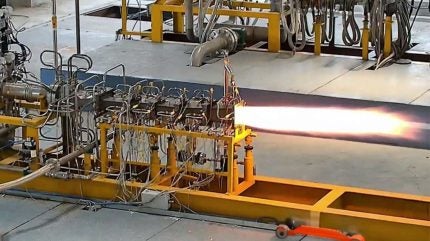
India’s Defence Research & Development Laboratory (DRDL) has executed an extensive ground test of an active cooled scramjet subscale combustor, surpassing 1,000 seconds of operation.
The test marks a pivotal point in DRDL’s development of hypersonic weapon capabilities. DRDL is part of the Defence Research and Development Organisation (DRDO).
This test was carried out at the newly established Scramjet Connect Test Facility in Hyderabad.
This test builds upon a previous one conducted for 120 seconds in January 2025. Following this successful demonstration, the next phase will involve testing a full-scale flight-ready combustor.
The Indian Ministry of Defence (MoD) explains that hypersonic cruise missiles, capable of exceeding five times the speed of sound, rely on air-breathing engines for sustained, long-duration cruise conditions.
The recent test validates the design of the scramjet combustor as well as the efficacy of the testing facility.

US Tariffs are shifting - will you react or anticipate?
Don’t let policy changes catch you off guard. Stay proactive with real-time data and expert analysis.
By GlobalDataThis is the result of collaborative efforts among DRDO laboratories, industry partners, and academic institutions, strengthening the foundation of the nation’s Hypersonic Cruise Missile Development Programme, said MoD.
The MoD said: “Raksha Mantri Rajnath Singh has complimented DRDO, Industry partners and academia for the remarkable achievement. He termed the success as a reflection of the government’s strong commitment in realising critical hypersonic weapon technologies for the nation.
“Secretary, Department of Defence R&D and Chairman DRDO Dr Samir V Kamat congratulated Director General (Missiles & Strategic Systems) U Raja Babu, Director DRDL Dr GA Srinivasa Murthy and the complete team for demonstrating the supersonic combustion for more than 1,000 seconds involving cutting edge technologies.”
In 2020, DRDO successfully showcased its hypersonic air-breathing scramjet technology with the Hypersonic Technology Demonstration Vehicle (HSTDV) flight test.
The vehicle was propelled to an altitude of 30km using a solid rocket motor, where it separated from its aerodynamic heat shields at a hypersonic Mach number.
The scramjet engine operated under high dynamic pressure and extreme temperatures.
The latest progress follows DRDO’s flight trial of India’s first long-range hypersonic missile from Dr APJ Abdul Kalam Island off the coast of Odisha in November 2024.



